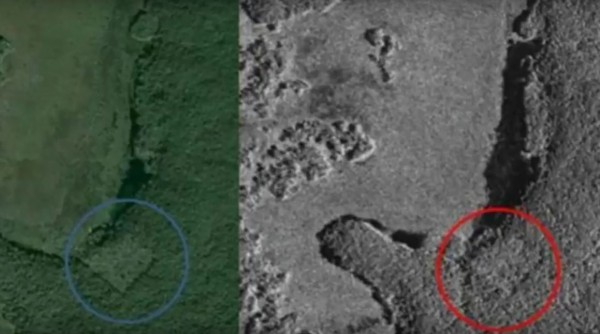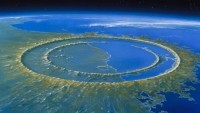William Gadoury Didn’t Discover a Long-lost Maya City; only an Abandoned Farm
| Arthur Dominic Villasanta | | May 11, 2016 11:37 PM EDT |
Long-lost Maya city or milpa?
The tale of a precocious 15 year-old Canadian discovering a long-lost Maya city using his unique insight about constellations and satellite photos makes for a great story and made headlines the world over.
But archaeologists and other experts are now saying what William Gadoury really "discovered" with the help of Google Earth is an abandoned cornfield or an old "milpa" left to fallow only years and not centuries ago. They do, however, praise the young Quebecois for his efforts but said findings have no support in science.
Like Us on Facebook
Gadoury from Saint-Jean-de-Matha, Quebec made headlines when he announced the discovery of what he believed to be the ruins of a lost 4,600 year-old Maya city in Mexico. The Grade 10 student astounded people by saying he used ancient star charts and the positions of known Mayan ruins to locate this possible Mayan city shown as a hazy green rectangle in satellite photos.
"The rectangle on the published image, supposedly a Maya site, is but an old milpa or cultivation plot, abandoned years ago, but definitely not centuries ago," said Ivan Sprajc, an archeologist and Mayan expert based in Slovenia.
As for Gadoury's claim the Maya built their cities by referencing the stars, Sprajc said this is nothing more than conjecture.
"In general, since we know of several environmental facts that conditioned the location of Maya settlements, the idea correlating them with stars is utterly unlikely."
Sprajc noted "it's impossible to check whether there is any correspondence between the stars and the location of Maya cities."
Sprajc's views were seconded by Anthony Aveni, a founder of the field of archeoastronomy.
"Maya constellations that we know of, with the exception of Scorpio, bear no relation to those we find on modern star maps," said Aveni.
An even more scathing indictment of Gadoury was made by David Stuart, an anthropologist from the Mesoamerica Center-University of Texas at Austin, who said Gadoury's work was "junk science."
"Seeing such patterns is a rorschach process, since sites are everywhere, and so are the stars," Stuart wrote on his Facebook page.
"The square feature that was found on Google Earth is indeed man-made, but it's an old fallow cornfield, or milpa."
A milpa is a crop-growing system used throughout Mesoamerica, mostly in the Yucatan peninsula where Gadoury located this alleged Maya city. The word milpa comes from the Nahuatl term for maize field.
Thomas Garrison, an anthropologist at the University of Southern California: Dornsife, said the rectangular nature of the feature and the secondary vegetation growing back within it are "clear signs" of a relic milpa.
TagsWilliam Gadoury, Maya, Mayan city, Quebec, Canada, Mexico, Ivan Sprajc, Anthony Aveni, Thomas Garrison, David Stuart
©2015 Chinatopix All rights reserved. Do not reproduce without permission
EDITOR'S PICKS
-

Did the Trump administration just announce plans for a trade war with ‘hostile’ China and Russia?
-

US Senate passes Taiwan travel bill slammed by China
-

As Yan Sihong’s family grieves, here are other Chinese students who went missing abroad. Some have never been found
-

Beijing blasts Western critics who ‘smear China’ with the term sharp power
-

China Envoy Seeks to Defuse Tensions With U.S. as a Trade War Brews
-

Singapore's Deputy PM Provides Bitcoin Vote of Confidence Amid China's Blanket Bans
-

China warns investors over risks in overseas virtual currency trading
-

Chinese government most trustworthy: survey
-

Kashima Antlers On Course For Back-To-Back Titles
MOST POPULAR
LATEST NEWS
Zhou Yongkang: China's Former Security Chief Sentenced to Life in Prison

China's former Chief of the Ministry of Public Security, Zhou Yongkang, has been given a life sentence after he was found guilty of abusing his office, bribery and deliberately ... Full Article
TRENDING STORY

China Pork Prices Expected to Stabilize As The Supplies Recover

Elephone P9000 Smartphone is now on Sale on Amazon India

There's a Big Chance Cliffhangers Won't Still Be Resolved When Grey's Anatomy Season 13 Returns

Supreme Court Ruled on Samsung vs Apple Dispute for Patent Infringement

Microsoft Surface Pro 5 Rumors and Release Date: What is the Latest?












